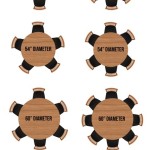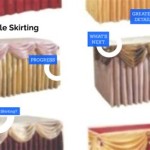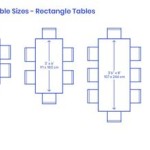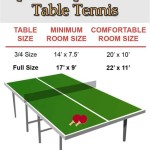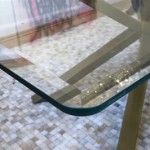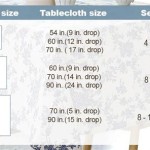How To Sew A Table Runner With Batting
A table runner serves as a decorative and functional addition to dining tables, coffee tables, or sideboards. Adding batting to a table runner provides extra padding, insulation, and a quilted aesthetic, elevating its visual appeal and protective qualities. This article provides a step-by-step guide on how to sew a table runner with batting, ensuring a professional and durable finished product.
Materials and Tools Required
Before commencing the project, gather all necessary materials and tools. This preparation streamlines the sewing process and minimizes interruptions.
- Fabric: Select appropriate fabrics for the top, bottom, and binding of the table runner. Consider coordinating colors, patterns, and textures for a cohesive design. The amount of fabric needed will vary depending on the desired size of the finished table runner.
- Batting: Choose batting that is appropriate for quilting. Cotton, polyester, or a cotton-polyester blend are common choices. The batting should be slightly larger than the intended finished size of the table runner to allow for trimming.
- Thread: Select thread that complements the fabric colors. A high-quality thread designed for quilting is recommended for durability and even stitching.
- Sewing Machine: A sewing machine in good working order is essential. Ensure the machine is threaded correctly and the tension is properly adjusted.
- Cutting Tools: A rotary cutter, cutting mat, and acrylic ruler are ideal for precise fabric cutting. Fabric scissors can also be used, but may not provide the same level of accuracy.
- Measuring Tools: A measuring tape or ruler is necessary for accurate measurements.
- Pins or Clips: Use pins or clips to hold the fabric layers together during the sewing process.
- Iron and Ironing Board: An iron is crucial for pressing seams and creating a crisp, finished look.
- Marking Tools: A fabric marker or chalk is useful for marking cutting lines and quilting patterns.
Preparing the Fabric and Batting
Proper preparation of the fabric and batting is crucial for achieving a professional-looking result. Pre-washing the fabric helps prevent shrinkage and color bleeding after the table runner is completed. Pressing the fabric removes wrinkles and creases, ensuring accurate cutting and sewing.
Begin by pre-washing and drying all fabrics according to the manufacturer's instructions. This step is particularly important for cotton fabrics, which tend to shrink significantly. Once the fabric is dry, iron it thoroughly to remove any wrinkles. Place the fabric on a cutting mat and use a rotary cutter and acrylic ruler to cut the fabric to the desired dimensions for the table runner top and bottom. The dimensions should be the same for both pieces.
Next, prepare the batting. The batting should be slightly larger than the cut fabric pieces to allow for trimming after quilting. Place the batting on a flat surface and smooth out any wrinkles. The extra batting will be trimmed off after the quilting is completed.
Assembling the Table Runner Layers
The construction of a table runner involves layering the fabric and batting in a specific sequence. This process ensures that the finished product has the desired thickness, texture, and appearance. The layers are usually basted together to ensure they don't shift during the quilting process.
Place the backing fabric on a flat surface, right side down. Smooth out any wrinkles or creases. Center the batting on top of the backing fabric. Ensure that the batting extends slightly beyond the edges of the backing fabric on all sides. Place the top fabric on top of the batting, right side up. Align the edges of the top fabric with the edges of the batting.
Basting is the process of temporarily securing the layers together. This can be done with safety pins, basting spray, or long stitches made by hand or machine. Pinning is a common method. Starting from the center of the table runner, place pins approximately every 4-6 inches, working outwards towards the edges. Ensure that the pins go through all three layers of fabric and batting. Alternatively, use basting spray, applying a light, even coat to each layer before assembling. This can be less bulky than pins and can be quicker for larger projects. Machine basting involves using a long stitch length on the sewing machine to create temporary seams that hold the layers together. Baste around the perimeter of the table runner, approximately ½ inch from the edge.
Quilting the Table Runner
Quilting is the process of stitching through all three layers of the table runner (top fabric, batting, and backing fabric), securing them together and creating a decorative pattern. Quilting can be done by hand or machine, depending on personal preference and skill level.
Before quilting, decide on a quilting design. Simple designs, such as straight lines, diagonal lines, or meandering patterns, are suitable for beginners. More complex designs, such as intricate motifs or free-motion quilting, require more experience. Mark the quilting design on the top fabric using a fabric marker or chalk. If quilting straight lines, use a ruler or quilting guide to ensure accuracy. If free-motion quilting, lower the feed dogs on the sewing machine and use a special quilting foot.
Begin quilting from the center of the table runner and work outwards towards the edges. This helps to prevent puckering and distortion. Use a consistent stitch length and maintain even tension. Overlap the stitching at the beginning and end of each line to secure the thread. If quilting by machine, move the fabric smoothly and evenly under the needle. If quilting by hand, use small, even stitches. Periodically stop to check the back of the table runner to ensure that the quilting is consistent and there are no skipped stitches or loose threads. Once the quilting is complete, trim the excess batting and backing fabric flush with the edges of the top fabric, using a rotary cutter and acrylic ruler.
Binding the Table Runner
Binding is the process of encasing the raw edges of the table runner with fabric to create a clean, finished look. The binding also adds durability and prevents the edges from fraying. Typically, the binding fabric is cut on the bias for flexibility around corners and curves.
Calculate the amount of binding fabric needed by measuring the perimeter of the table runner and adding several inches for seam allowances. Cut the binding fabric into strips, typically 2 ½ inches wide. The fabric is traditionally cut on the bias, at a 45-degree angle to the grain, to allow for stretch and flexibility, particularly around corners. However, for a simple rectangular table runner, straight-grain strips can be used. Join the strips together end to end to create one long binding strip. Press the seams open to reduce bulk. Fold the binding strip in half lengthwise, wrong sides together, and press. This creates a double-fold binding.
Attach the binding to the table runner, starting on one of the long sides. Place the raw edges of the binding strip along the raw edge of the table runner, right sides together. Pin or clip the binding in place. Sew the binding to the table runner using a ¼-inch seam allowance. Miter the corners by stopping ¼ inch from the corner, pivoting the fabric, and sewing diagonally across the corner. Trim the excess fabric and fold the binding to the back of the table runner. Turn under the raw edge of the binding and pin or clip it in place. Hand-stitch or machine-stitch the binding to the back of the table runner, using a blind stitch or a decorative stitch. Ensure the binding is securely attached and covers the stitching line on the front of the table runner. Once the binding is complete, press the edges to create a crisp, clean finish.

How To Make A Table Runner 3 Easy Diy Runners Treasurie

Easy 10 Minute Table Runner Tutorial For Beginners

Quilted Table Runner Tutorial Adventures Of A Diy Mom

How To Sew An Easy Striped Table Runner Tamaras Joy

Easy 20 Minute Table Runner Homemade Diy Sewing Gift

Ten Minute Table Runner Little House Living

How To Make An Easy Table Runner

Nancy Zieman The Blog No Hassle Table Topper Sewing Tutorial And New Wildflower Boutique Fabrics

How To Make A Table Runner An Easy Step By Guide Quilting Life

How To Sew A Table Runner 14 Steps With S Wikihow


